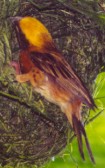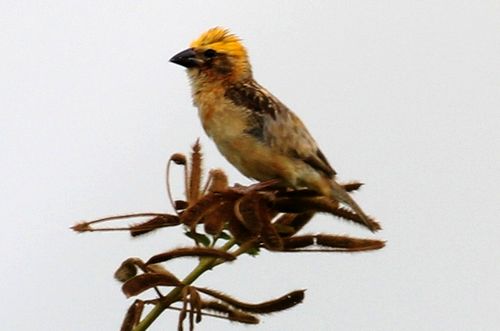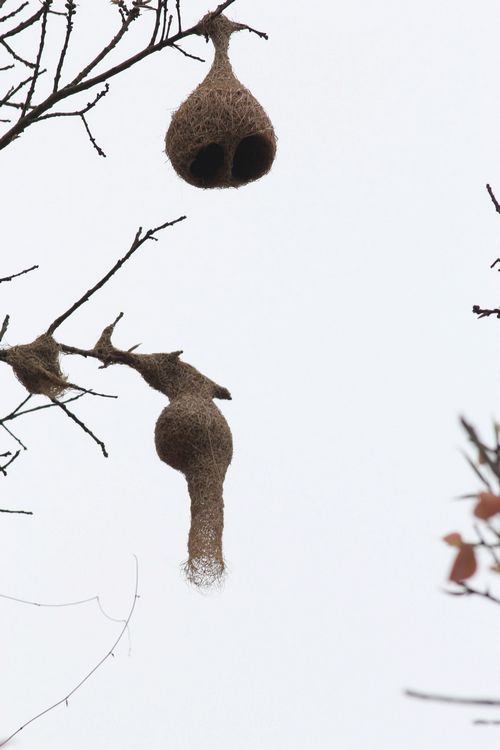A small population of baya weaver (Ploceus philippinus) was found in Chengzi village, a Dai village near Xishuangbanna Tropical Botanical Garden (XTBG) by bird lovers in early September. Here are photos of baya weaver and its nest.
baya weaver (Ploceus philippinus ) (Image by Shi Lingling)
nest of baya weaver
Baya Weaver
Ploceus philippinus
Weaver Bird/Finch, Tempua (Malay)
Like the munias they are closely related to, Baya Weavers eat mainly grass seeds. They too have large conical beaks to deal with their food. They forage in flocks, in grass as well as on the ground. The flock flies in close formation, often performing complicated manouvres.
 Breeding: These dull looking birds have a most interesting breeding season (December-March). At this time, the males put on a brighter costume and they start to build their amazing nests. Breeding: These dull looking birds have a most interesting breeding season (December-March). At this time, the males put on a brighter costume and they start to build their amazing nests.
Baya Weavers nest in colonies of up to 20-30, usually in trees near freshwater and open ground. In Singapore, they appear to prefer coconut palms. Elsewhere, they may nest in an isolated low tree. They have been known to nest in trees with a hornet's nest or with the nests of fiercely biting
|


 Breeding: These dull looking birds have a most interesting breeding season (December-March). At this time, the males put on a brighter costume and they start to build their amazing nests.
Breeding: These dull looking birds have a most interesting breeding season (December-March). At this time, the males put on a brighter costume and they start to build their amazing nests.